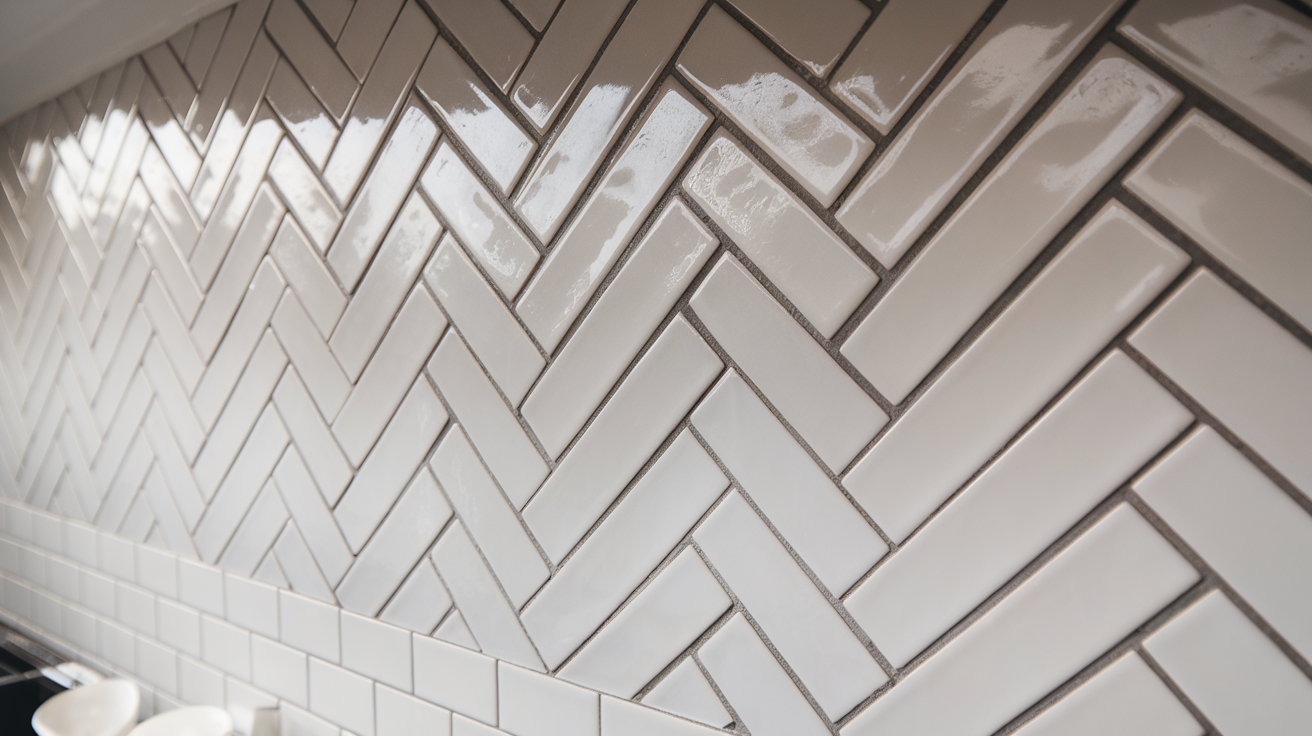Subway tiles are a classic choice for many interior spaces.
Their sleek, simple design and versatility make them perfect for adding a stylish touch to any room.
If you’re planning a kitchen backsplash, bathroom walls, or a statement feature in a living room, subway tiles can easily adapt to your design needs.
In this blog, I’ll walk you through unique subway tile patterns, each bringing its own flair to your home.
Choosing the right pattern can significantly impact the ambiance and design of your space.
From traditional straight-set arrangements to more intricate patterns like herringbone, subway tiles offer endless possibilities.
How to Choose the Right Grout Color for Your Subway Tiles
Before getting into the patterns, it’s important to consider the grout color you’ll pair with your subway tiles.
Grout plays a significant role in enhancing or diminishing the visual appeal of your tile arrangement.
Light-colored grouts, such as white or beige, help achieve a seamless, clean look, making the tiles appear more uniform.
On the other hand, darker grouts like charcoal or black can create a striking contrast, allowing the tiles to pop and adding boldness to the design.
You should also take into account the tone of your tiles, as matching grout can create a unified, minimalistic vibe, while contrasting grout can make a bolder statement.
Subway Tile Patterns to Try
Below are subway tile patterns that can transform your space. From classic designs to modern twists, these ideas add personality and style to any room.
1. Classic Brick Pattern
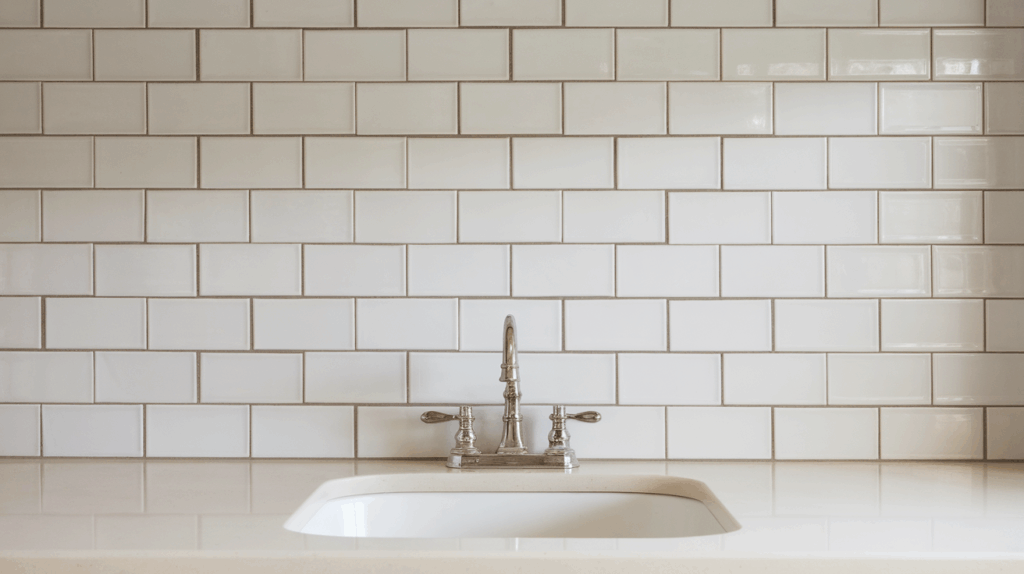
The classic brick pattern is timeless, creating a sleek, straightforward design with tiles arranged in horizontal, staggered rows.
It’s the most traditional and popular choice, offering a clean and modern aesthetic.
This pattern enhances any room with its simplicity, making it ideal for kitchens and bathrooms alike.
The classic brick layout creates depth and visual appeal without overwhelming the space, making it a versatile option for various interior styles.
2. Herringbone Pattern
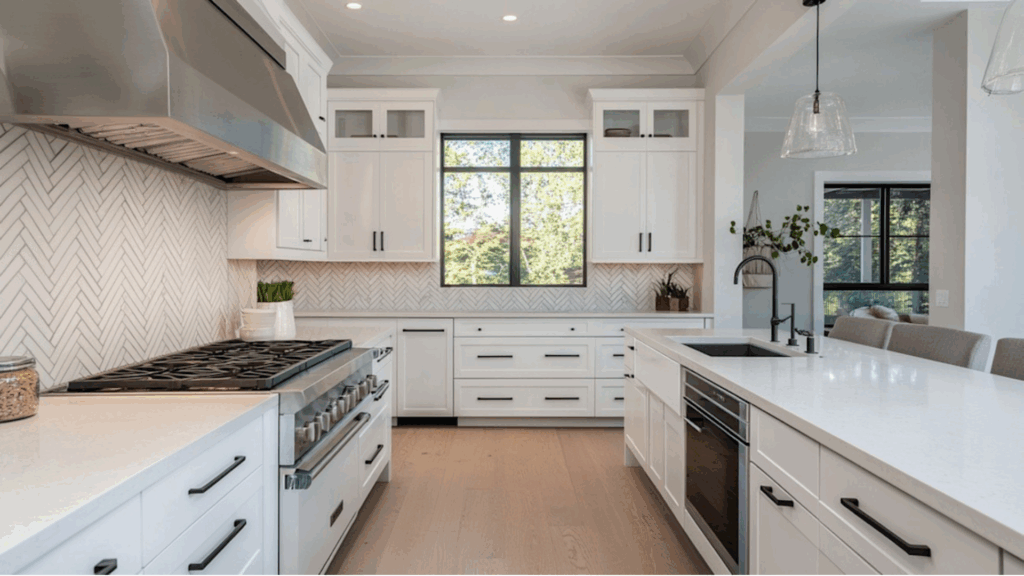
Herringbone is a dynamic and eye-catching pattern that arranges subway tiles at a 45-degree angle to form a zigzag shape.
It’s perfect for adding energy and texture to your walls.
This design works best as a focal point, whether in a backsplash or feature wall.
The herringbone layout offers a sophisticated, high-end look, making it popular for both contemporary and traditional spaces. It brings movement and complexity to the design of any room.
3. Vertical Stacked Pattern
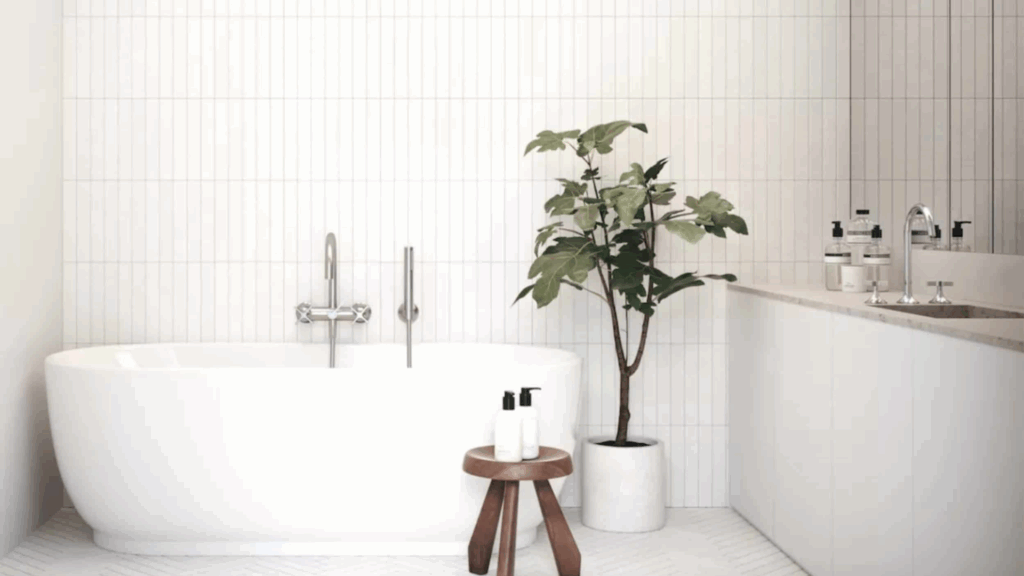
Vertical stacked subway tiles create a modern and minimalist effect by stacking tiles in straight, vertical columns.
This pattern elongates the walls, making spaces feel taller.
It’s perfect for narrow rooms or areas that need to emphasize height, such as small kitchens and bathrooms.
Vertical stacking is sleek and visually interesting, offering a contemporary aesthetic that pairs well with industrial or modern décor styles, providing a clean and straightforward layout.
4. Chevron Pattern
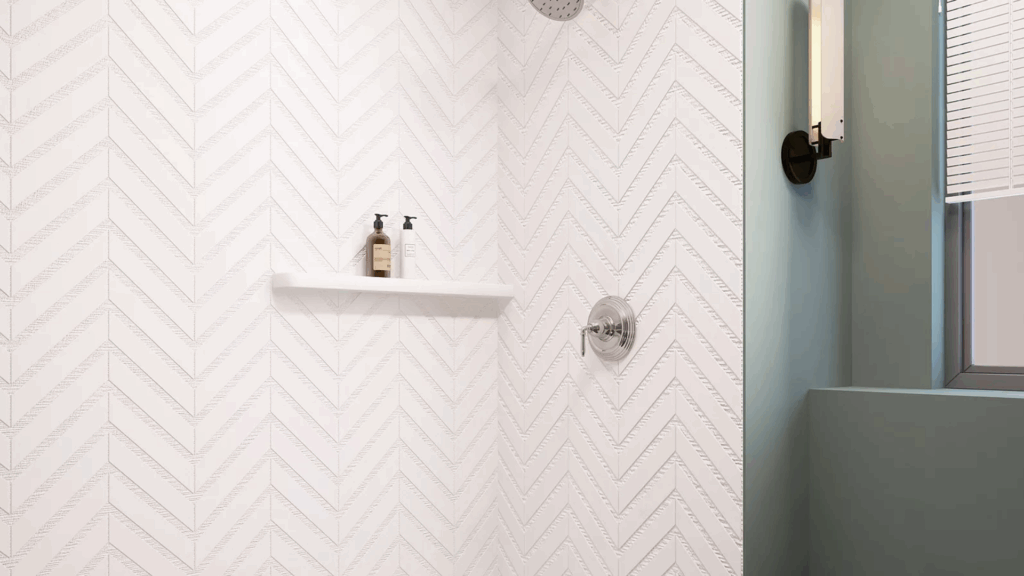
Chevron is similar to herringbone but with a sharper, more defined “V” shape.
Tiles are laid at 45-degree angles in this elegant pattern to create a seamless, flowing look.
The chevron pattern is ideal for areas that need a bold statement, such as a feature wall or backsplash.
It works wonderfully with both neutral and bold-colored tiles, and its sharp lines create an organized and sophisticated ambiance in any room of the house.
5. Basketweave Pattern
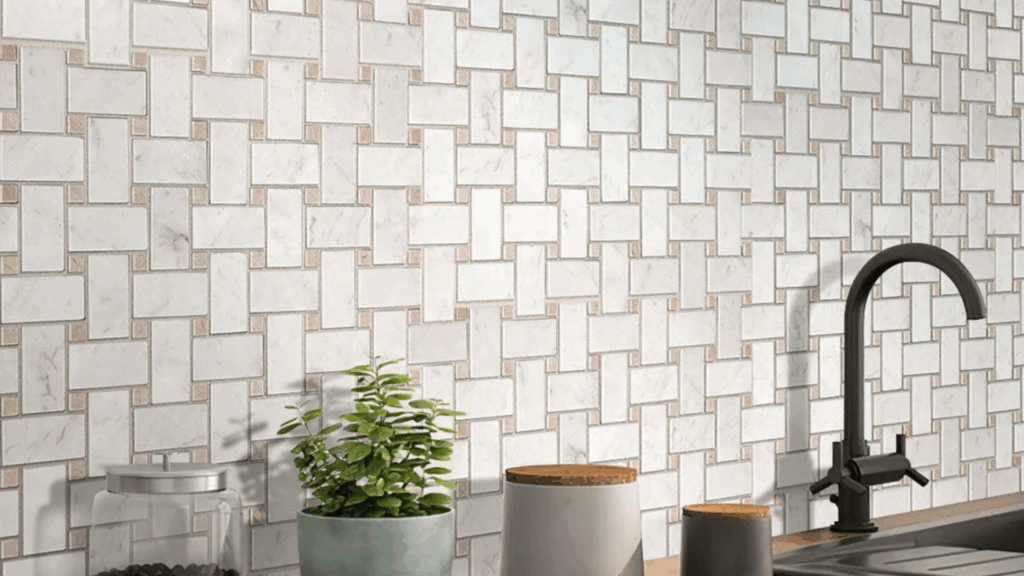
The basketweave pattern creates a woven effect by alternating horizontal and vertical tiles.
This intricate design is great for adding texture and visual interest to your walls.
It’s a more classic and vintage-inspired pattern that works beautifully in bathrooms, entryways, and kitchens.
The basketweave arrangement can be styled with a variety of grout colors to create either a subtle or more pronounced look.
It’s perfect for those looking for a unique, sophisticated touch to their design.
6. Grid Pattern
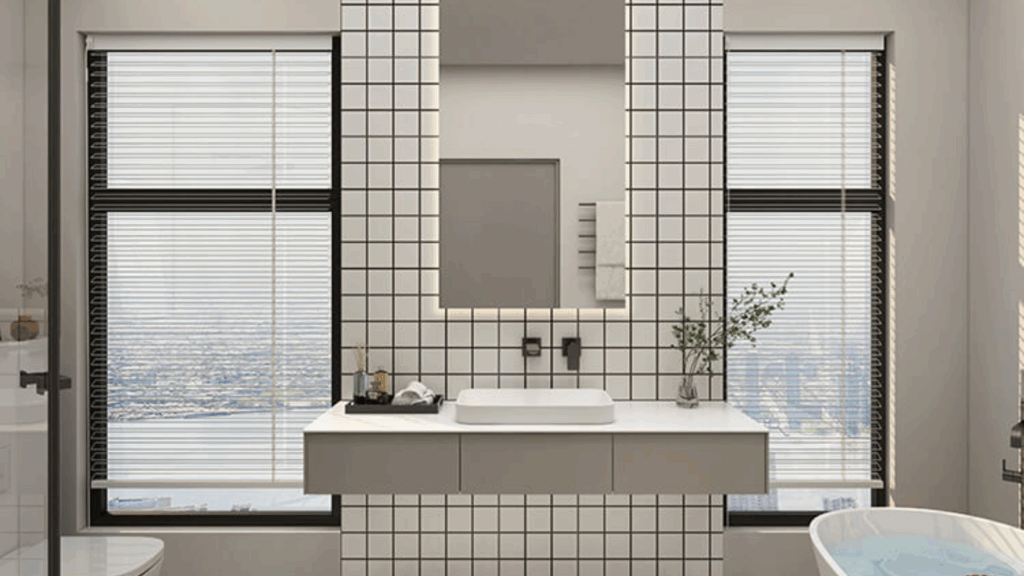
A grid pattern is all about symmetry and order. Subway tiles are arranged in perfect rows and columns, creating a neat, structured design.
This pattern is ideal for modern, minimalist interiors where clean lines are essential.
The grid pattern works well in bathrooms, kitchens, and even living areas, offering a versatile and timeless look that allows other design elements to shine.
It’s the perfect choice if you want a calm, balanced space with a geometric appeal.
7. Diagonal Pattern
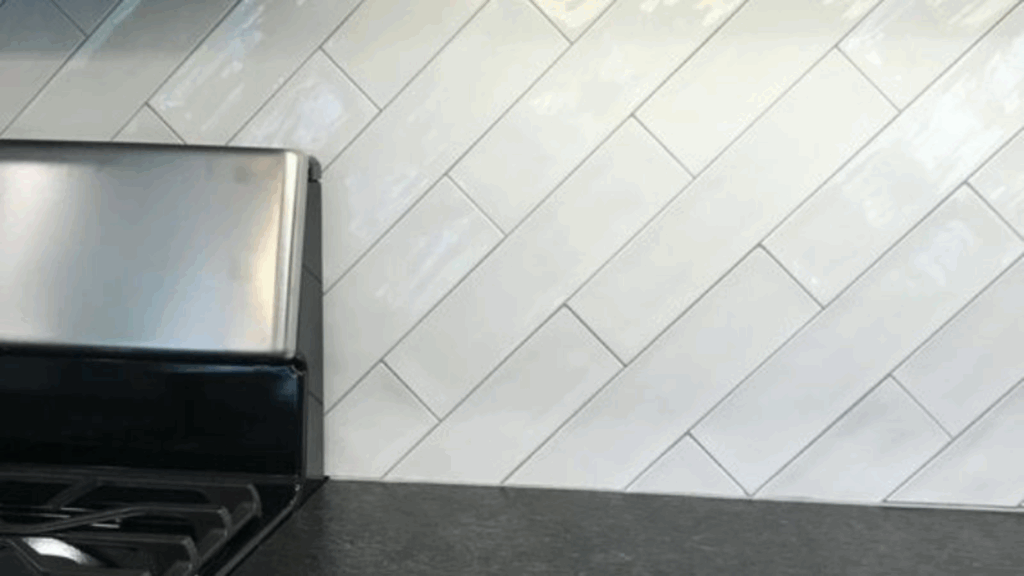
A diagonal pattern places subway tiles at a 45-degree angle, creating an eye-catching, dynamic effect.
This arrangement adds depth and visual interest, making it perfect for smaller spaces.
Diagonal tiles can make rooms feel larger by drawing the eye along the lines.
It works exceptionally well in narrow kitchens, bathrooms, or hallways, and adds a stylish flair while maintaining a classic feel.
Diagonal tiles also offer a unique twist on the classic brick layout, creating a fresh look.
8. Random Staggered Pattern
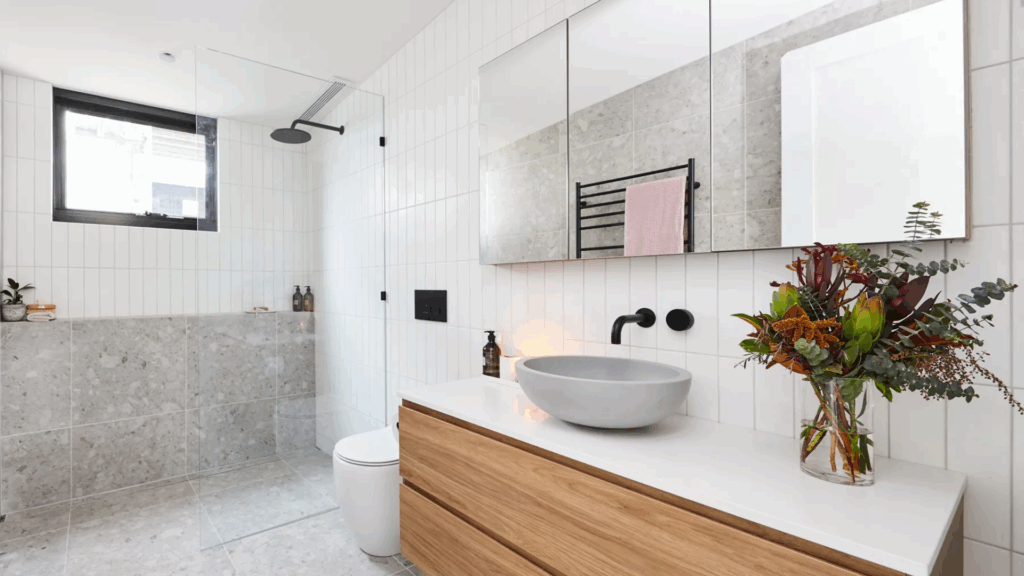
The random staggered pattern mixes up the traditional brick pattern with varying tile shifts.
Some tiles are offset slightly more or less than others, creating an asymmetrical design.
This layout is perfect for rustic or farmhouse-style spaces, as it offers a more relaxed, organic feel.
It works well with natural materials like wood or stone, enhancing the warmth and charm of your space. The random, staggered arrangement brings character and uniqueness to any room.
9. Zigzag Pattern
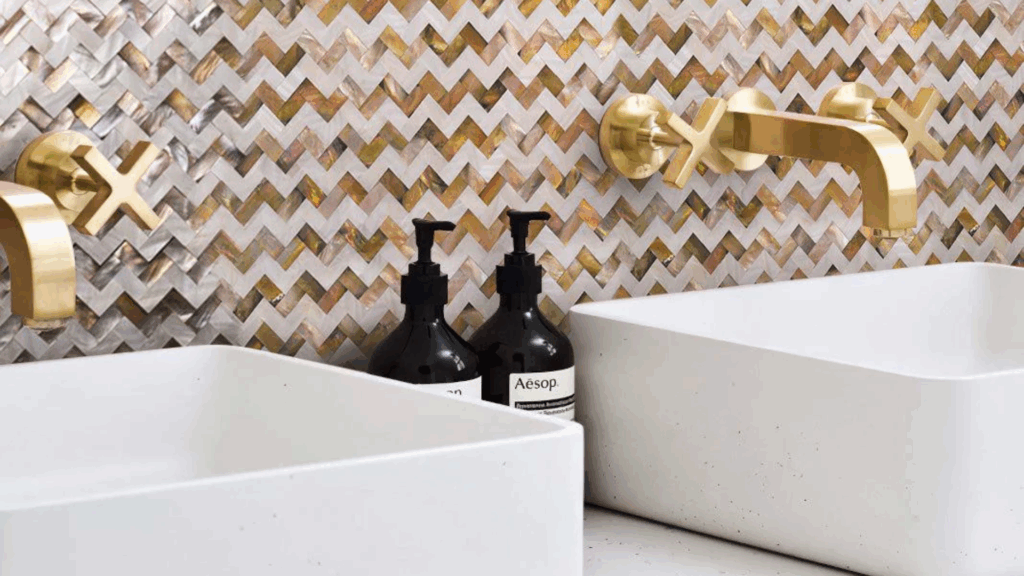
The zigzag pattern is a fun and playful twist on the traditional herringbone. Instead of the sharp V-shapes of herringbone, the zigzag design features a gentler, less rigid angle.
This pattern brings movement and visual interest without being too overpowering. It’s ideal for those who want something fresh and modern, yet not as bold as herringbone.
The zigzag pattern works especially well in larger rooms where it can stretch across expansive walls and make a statement.
10. Running Bond Pattern
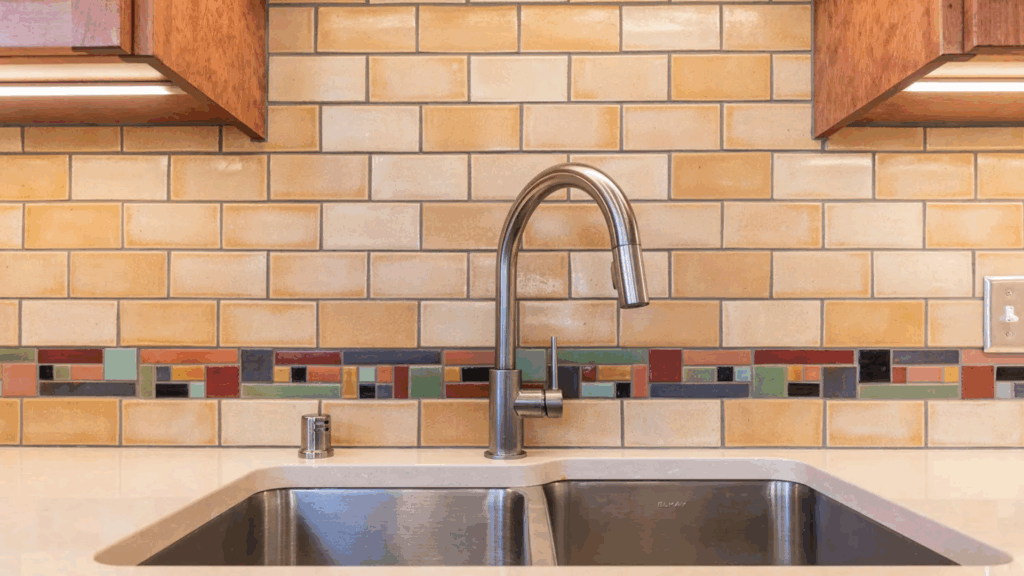
Running bond is a variation of the classic brick pattern where tiles are staggered horizontally, each row offset by half the tile’s length.
This staggered layout creates a cohesive, uniform design that remains simple yet dynamic.
It’s perfect for spaces where a more traditional or rustic aesthetic is desired.
The running bond arrangement is perfect for accent walls, kitchen backsplashes, and shower areas, offering a sense of order while still adding depth to the design.
11. Offset Brick Pattern
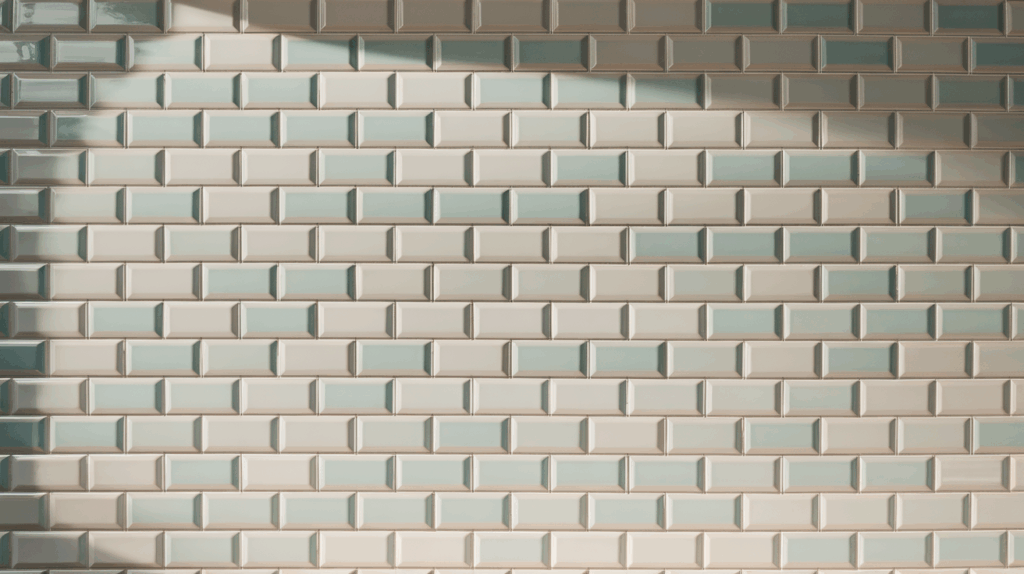
The offset brick pattern is a slightly subtler take on the classic brick design, with tiles shifted by a third of their length instead of the traditional half.
This results in a slightly more uniform and symmetrical look while still maintaining the texture of a staggered pattern.
It’s perfect for creating a smooth yet visually interesting surface.
The offset brick pattern is ideal for minimalist spaces that need a clean and calm design while still offering a touch of variation.
12. Diamond Pattern
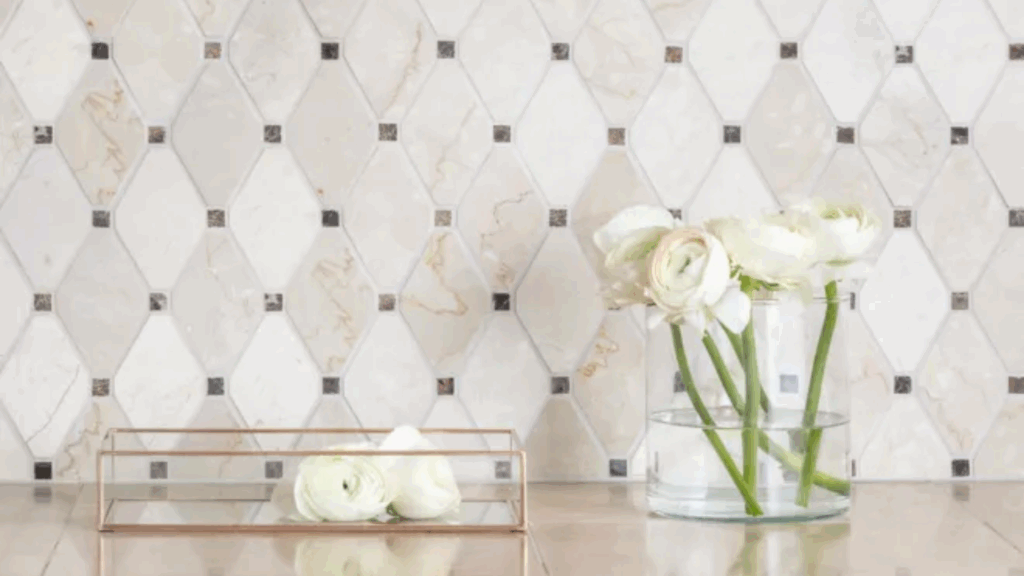
The diamond pattern is a bold and striking choice that arranges subway tiles at a 45-degree angle, forming a diamond shape.
This design adds a geometric appeal that draws the eye and makes a statement.
It works particularly well on accent walls or in large, open spaces.
The diamond layout brings sophistication and a touch of elegance to any room, offering a unique alternative to traditional patterns while still staying within a classic style.
13. Multi-Tile Combo Pattern
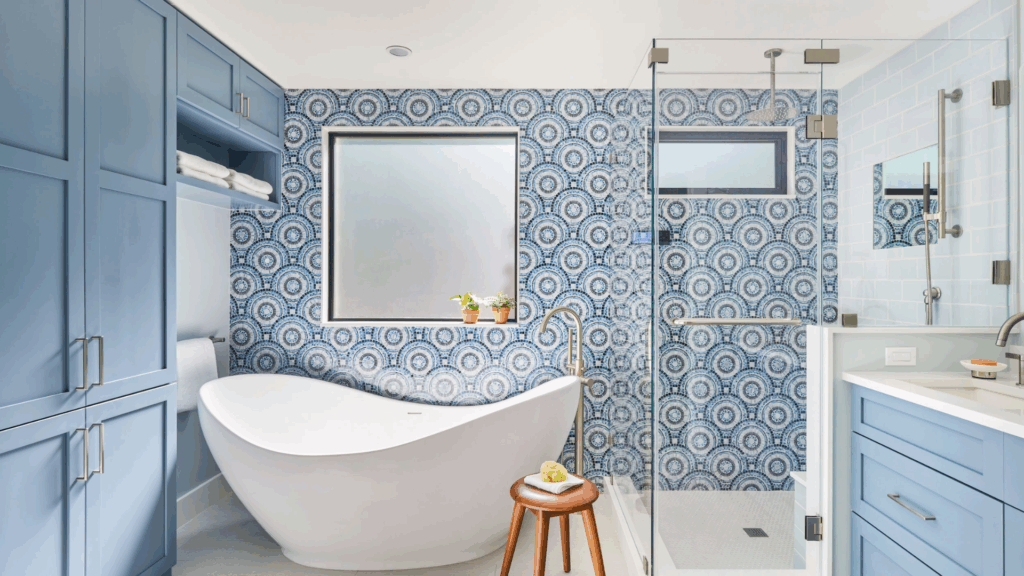
For those who want something totally unique, combining different sizes and shapes of subway tiles can create a visually interesting and artistic effect.
Mixing rectangular, square, and even circular tiles can give your walls a textured, layered look that adds personality and flair.
This pattern is perfect for creating a bold feature wall or a customized design.
Whether you mix tile colors, shapes, or sizes, this multi-tile combo pattern allows for endless possibilities to match your personal style.
Benefits of Using Subway Tiles in Your Home
Subway tiles are a timeless choice for any space. The key benefits are:
- Easy to Clean and Maintain: Subway tiles are low-maintenance, making them perfect for busy areas like kitchens and bathrooms.
- Timeless Design: Their classic style ensures they’ll never go out of fashion.
- Versatile: Suitable for any room, they enhance the space without overwhelming it.
- Variety of Materials: Available in ceramic, porcelain, glass, and more, fitting different design styles from rustic to modern.
- Customizable: Adaptable to various tile patterns and grout colors for a personalized touch.
- Smart Investment: Combining practicality with beauty, subway tiles are a long-lasting addition to your home.
Conclusion
Subway tiles are classic and flexible. With different ways to arrange them, you can customize your space to match your style.
By experimenting with different patterns, you can create a stylish look that reflects your personal taste and complements your home’s design.
If you choose a simple horizontal layout or a more intricate herringbone design, subway tiles will always remain a classic choice that adds both charm and function to any room.
Remember, the key to creating a beautiful space is selecting a tile pattern that resonates with your style and enhances the atmosphere of your home.
Don’t be afraid to play with color and layout for a distinctive touch that makes your space stand out. It’s all about making your design vision come to life.

